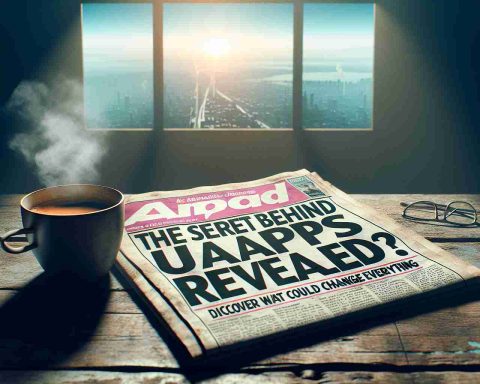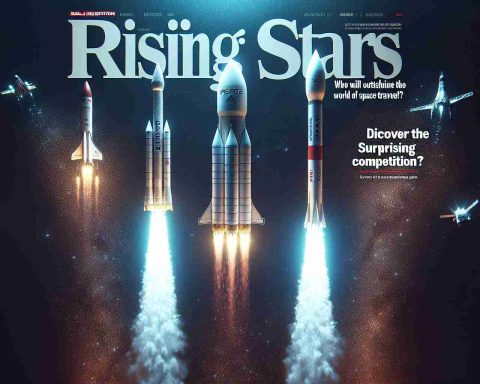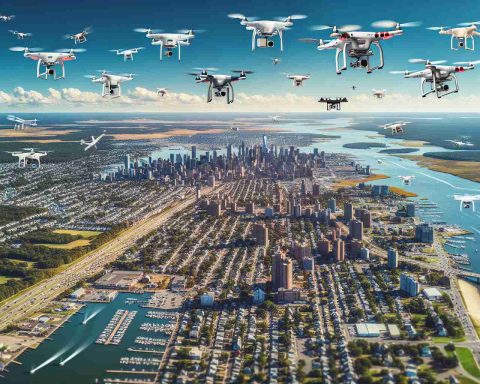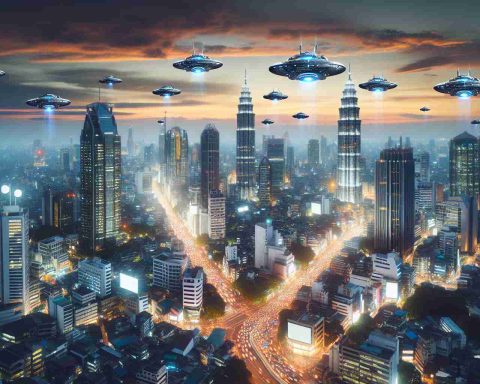ISRO’s Cutting-Edge Imaging Shines Light on a Spiritual Marvel
In a stunning showcase of technology, the Indian Space Research Organisation (ISRO) has leveraged its radar imaging satellite to capture extraordinary visuals of the Maha Kumbh Mela 2025 in Prayagraj, Uttar Pradesh. These satellite images reveal a sprawling network of infrastructure set up for the monumental religious event, including tent cities, roads, and extensive pontoon bridges at the sacred Sangam site.
The satellite, EOS-04 (RISAT-1A), boasts remarkable ‘C’ band microwave capabilities, enabling it to capture images regardless of weather conditions. By analyzing time-series photographs taken before and during the event, the satellite vividly illustrates the rapid development of the gathering’s infrastructure.
The visuals were highlighted by prominent figures such as Union Minister Hardeep Singh Puri, who shared these satellite images on social media, emphasizing ISRO’s contribution to this religious gathering. The National Remote Sensing Center (NRSC) utilized advanced radar technology to bypass cloud cover, effectively showcasing the area in unprecedented detail.
This initiative doesn’t just offer beautiful images; it also aids in disaster management and crowd control. Union Minister of State for Science and Technology, Jitendra Singh, praised the integration of modern technology in enhancing the experience of the Maha Kumbh Mela, which welcomes over 450 million devotees every 12 years. The gathering, which commenced on January 10, 2025, is a testimony to the intersection of faith and innovation, continuing until February 26.
Wider Implications of Technological Integration in Religious Gatherings
The intersection of technology and spirituality, as evidenced by ISRO’s impressive satellite imaging of the Maha Kumbh Mela, extends beyond mere visuals to encompass significant socio-cultural and economic ramifications. As millions gather for this holy pilgrimage, the effective management of such large crowds is not just a logistical necessity but a matter of public safety. Enhanced disaster management capabilities, enabled by real-time satellite data, can potentially save lives and streamline emergency responses—an increasingly vital function as climate change leads to unpredictable weather patterns.
On a cultural level, the visibility of such gatherings through advanced imaging reinforces the importance of preserving heritage while embracing modernity. The marriage of tradition with cutting-edge technology fosters a deeper connection between the younger generations and their cultural roots, potentially revitalizing interest in ancient practices and beliefs.
Furthermore, the economic implications are substantial. The infusion of tourism driven by these mega-events can significantly boost local economies, providing a boon for small businesses and creating jobs. However, this surge can equally strain local resources, illustrating the double-edged nature of such gatherings.
Looking toward the future, as technology continues to evolve, we may witness even more integration of satellite imagery and data analytics in managing large-scale events, perhaps even influencing global religious practices. Sustainability will also play a pivotal role, as stakeholders seek to balance the spiritual significance of gatherings like the Maha Kumbh Mela with the environmental footprint they leave behind.
ISRO Revolutionizes Religious Event Monitoring with Satellite Technology
ISRO’s Groundbreaking Radar Imaging at the Maha Kumbh Mela 2025
The Indian Space Research Organisation (ISRO) has made headlines by utilizing advanced radar imaging technology to monitor the Maha Kumbh Mela 2025, being held in Prayagraj, Uttar Pradesh. This prestigious event, which attracts over 450 million pilgrims every twelve years, showcases ISRO’s commitment to intertwining technology with significant cultural events.
Key Features of ISRO’s Satellite Imaging
1. Advanced Capabilities: The EOS-04 satellite, also identified as RISAT-1A, employs ‘C’ band microwave radar technology, allowing it to capture high-resolution images irrespective of weather conditions. This feature is critical for events where timely information is pivotal.
2. Infrastructure Monitoring: ISRO’s satellite images reveal the extensive infrastructure developments, including the construction of tent cities, roads, and pontoon bridges at the sacred confluence (Sangam) of the Ganges, Yamuna, and Saraswati rivers. These visuals serve as a real-time monitoring system for event logistics.
3. Disaster Management: The ability to analyze time series photographs enhances disaster management capabilities by providing insights into crowd dynamics and site conditions, which is vital given the scale of the gathering.
How ISRO Enhances Maha Kumbh Mela Experience
– Crowd Control: The data collected can help local authorities anticipate crowd movement and manage resources effectively.
– Cultural Significance: The integration of satellite technology into this religious gathering reflects the synthesis of faith and innovation, enhancing the experience for millions of devotees.
Insights and Trends in Satellite Usage for Event Management
The application of satellite imagery in managing large-scale events is gaining traction globally. Such technology not only streamlines logistical operations but also empowers authorities to ensure safety and enhance visitor experience, setting a precedent for future gatherings.
Pricing and Accessibility of Satellite Technology
While specific pricing for satellite imaging services can vary, recent trends indicate that governments and organizations are increasingly investing in such technologies, recognizing their value for public safety and efficient management.
Limitations and Challenges
Despite the advancements, there remain challenges in satellite technology:
– Data Interpretation: While capturing images is one aspect, timely and accurate interpretation of the data requires skilled personnel.
– Technical Limitations: Satellite coverage might be limited in certain regions, necessitating ground support for comprehensive monitoring.
Conclusion
ISRO’s efforts in employing radar imaging for the Maha Kumbh Mela not only highlight the organization’s technological prowess but also advocate for the responsible use of technology in cultural and spiritual contexts. As ISRO continues to innovate, the fusion of tradition and technology may pave the way for future advancements in event management.
For further information about ISRO and its initiatives, visit the official ISRO website.



















